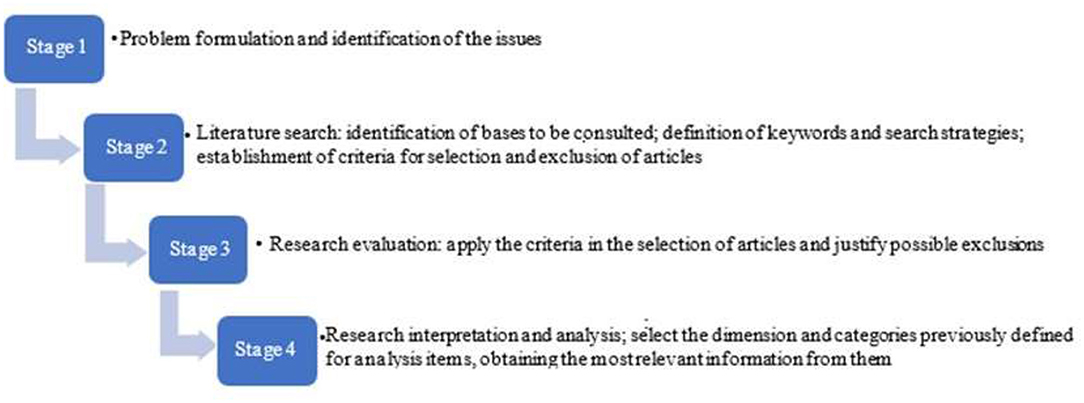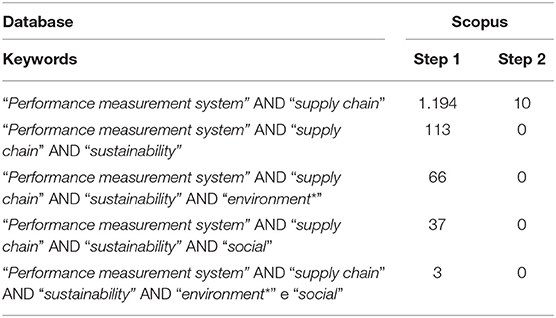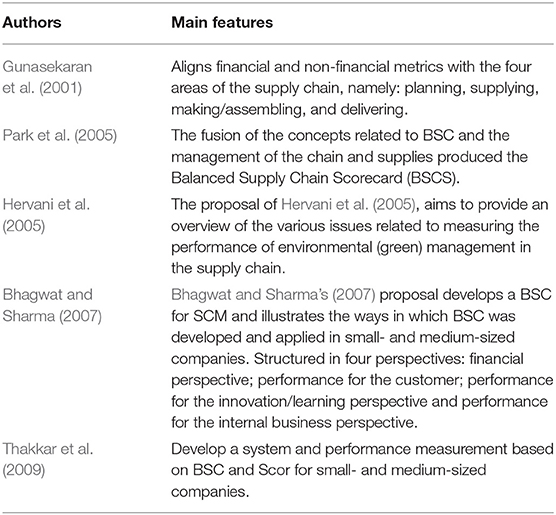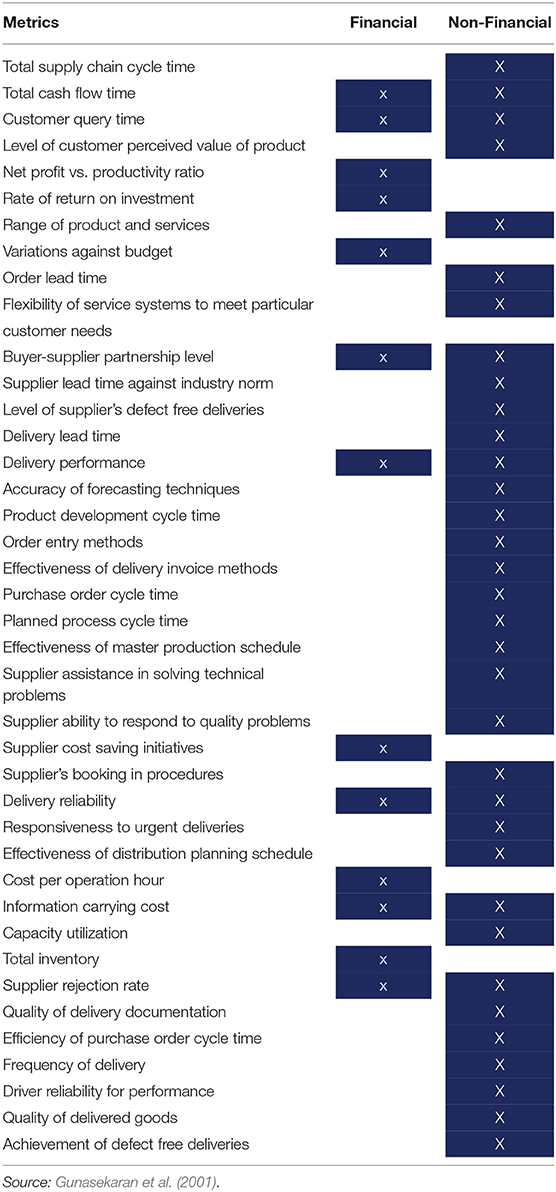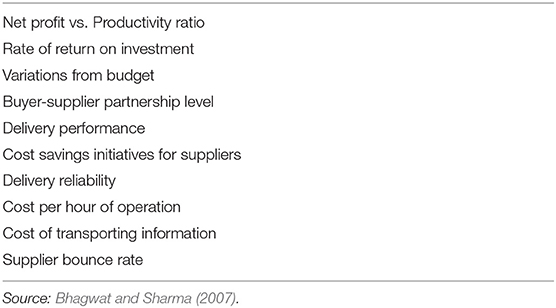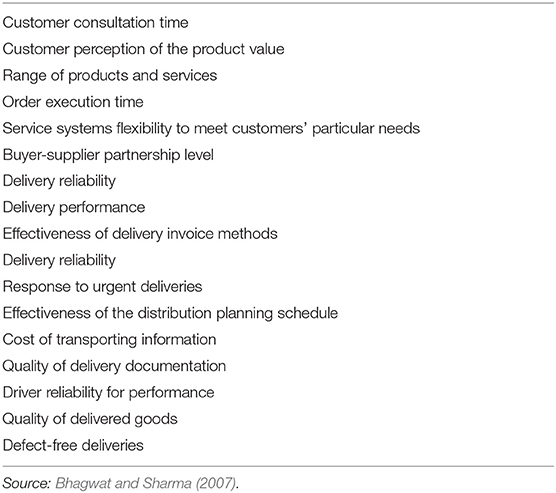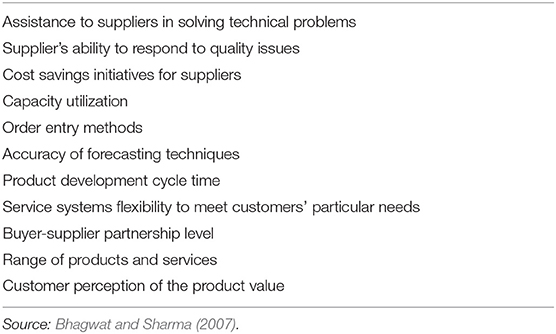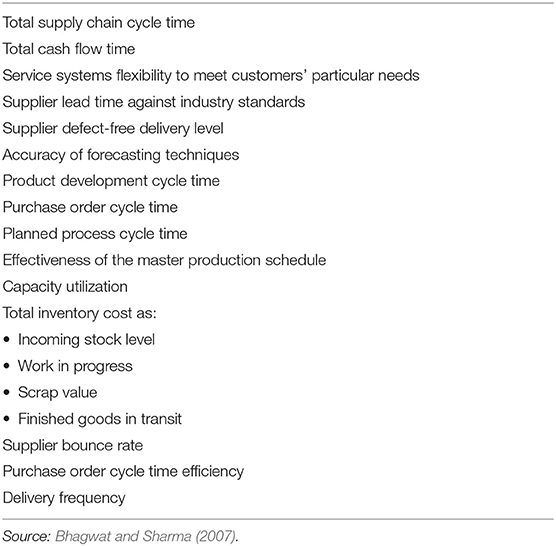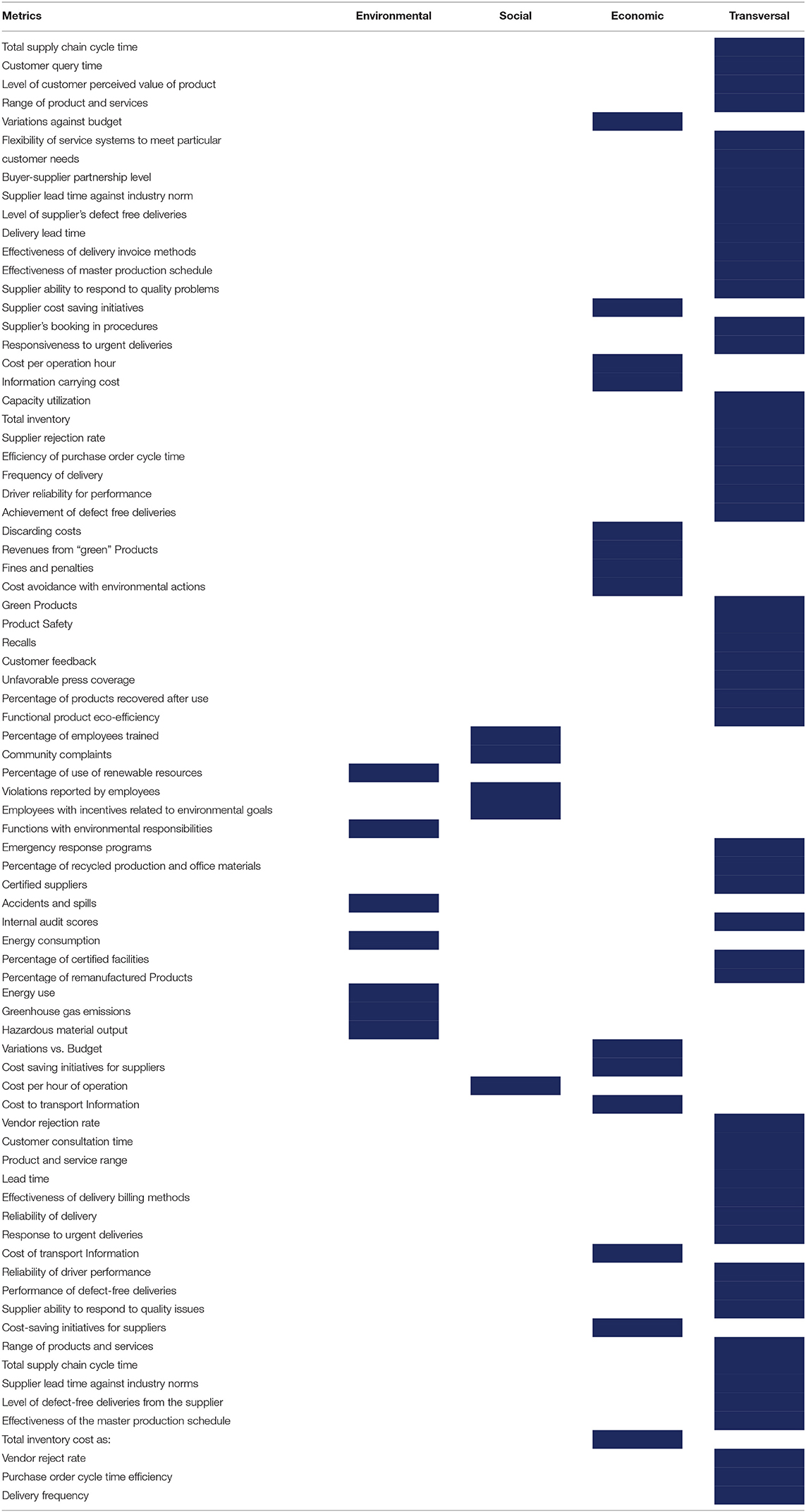Theoretical Proposal for an Integrated Sustainability Performance Measurement System in the Supply Chain
- Department of Production Engineering, Fluminense Federal University, Niterói, Brazil
Environmental impacts due to supply chains are seen as a challenge to innovation and criteria for prioritizing the application of organizational resources. In this context, the research question arises: how to build the necessary knowledge about supply chain performance indicators in sustainability, systematizing in an evaluation process integrated with the organizational results? The general objective of this research is to build an integrated system of sustainability performance analysis of the supply chain. In order to achieve the general objective, the specific objectives are the following: (i) selection of the bibliographic portfolio and (ii) analysis of articles content. The exploratory-descriptive research method presents and illustrates a structured process for the selection of scientific articles on supply chain performance indicators in the sustainability context. The method identified the most important keywords and the main databases of full texts and abstracts aligned with the topic. An important review of the literature reveals that efforts to improve or influence the practice of sustainability in the supply chain raise critical questions about the transaction costs and effectiveness of the approach. The review promoted the development of a system of indicators inspired by the Balanced ScorCard (BSC) to address sustainability performance issues. The originality or value lies on the useful for managers throughout the supply chain. It was identified in the literature that supply chains still generate significant environmental impacts, social impacts, and use of natural resources, even though they individually present statements in their strategies and accountability indicating the priority regarding the mitigation of social, environmental, and economic impacts. Another finding is that it is not just a matter of complying with legal and institutional frameworks. The scientific literature defines the need to prioritize studies on Green Supply Chain Management (GSCM), which helps organizations in the production chain to achieve competitiveness and at the same time emphasize the reduction of social risks and environmental impacts. The main findings of the paper are related to the possibility of interfacing the dimensions present in TBL with performance measurement in a supply chain.
Introduction
The high expansion in the number of companies involved in production, along with a subsequent increase in manufacturing activities, has intensified supply chain activities that lead directly to social and environmental impact.
Until recently, operational managers were concerned only with their unit, with the supply chain component units taking responsibility for social and environmental impacts simultaneously with economic performance, in product development, process design, operations, logistics, marketing, regulatory compliance, and waste management. Only since the quality revolution in the 1980s and the supply chain revolution in the 1990s, would the integration between supply chain companies make their practices more competitive. Today, Sustainable Supply Chain Management, also known as Green Supply Chain Management (GSCM), is increasingly arousing the interest of researchers and practitioners in operations and supply chain management (Srivastava, 2007).
According to Magacho (2017) the food industry in Brazil is a sector in constant growth and investment, as well as its turnover in research, food biogenesis, fungi, and enzymes in food technology, among other aspects, consolidate. Carletto (2006) exemplifies companies that act in an integrated manner throughout the supply chain, in the segment of grains such as soybeans, wheat, providing raw materials for the food industry, in addition to the production of food for the final consumer.
Given the relevance of the context, and the representativeness that the information offers, the research question that is intended to be answered is: What criteria are appropriate to assess the maturity of sustainable management in a supply chain?
For this, it is necessary to use a sustainable approach integrating environmental, social, and economic factors, to help achieve sustainability in companies' supply chains. According to the Paris agreement (2015), Global trade pressure has increased significantly in recent years to achieve a series of sustainable development goals by the year 2030. In this way, performance measurement systems that monitor the performance of sustainable supply chain management practices are attracting more attention in both developed and developing countries (Hofmann et al., 2018; Gardner et al., 2019; Raut et al., 2019; Shaharudin et al., 2019).
Another justification for choosing this theme is based on the fact that the use of performance measurement methods in the supply chain has been studied by some authors. However, these studies are scattered in the literature, which makes it difficult to have a panoramic view of the theme. Aiming to provide a systematic view on this subject, this article presents a study about the publications on the theme of performance indicators in sustainability in the supply chain.
Sustainability started to be debated after the publication of the Brundtland Commission Report which presented sustainable development as one that “meets the needs of the present without compromising the ability of future generations to satisfy their own needs” (Standing and Jackson, 2007). The sustainable policy in organizations translates into actions aimed at the economic use of resources, respecting the environment, and providing ergonomics and safety in activities in order to minimally impact the region in which their facilities are located (Golinska and Kuebler, 2014).
For Pojasek (2012) and Okongwu et al. (2013), Brundtland's (1987) definition of sustainability is too abstract, conceptualizing sustainability as the ability of an organization to transparently manage its responsibilities for environmental management, social, and economic well-being in order to ensure long-term prosperity. At the same time, the organization must also meet the needs of the interested parties.
In addition to the context described above, on March 11, 2020, global supply chains awoke to a dangerous reality, when the World Health Organization (WHO) declared a new coronavirus pandemic (COVID-19). Originating in Wuhan, China, the cases spread rapidly to Japan, South Korea, Europe, and the United States, as they reached global proportions (Ibn-Mohammed et al., 2020).
The Covid-19 pandemic provides additional evidence that the three dimensions of sustainability are inextricably linked. It should be noted that significant economic changes occurred with supply chain shutdowns in all industries. In addition, new social sustainability standards emerged as people started to live differently—for example, social distancing has resulted in people working from home and fewer physical meetings (Sarkis, 2020).
Thus, it is relevant to highlight the concept of Supply Chain Management (SCM), which refers to the management of all activities involved in purchasing and supplying, including logistics management.
In addition to the elements presented in Grant (2017)'s definition, for Lambert and Enz (2017), SCM provides interfaces that occur between the functions of marketing, logistics, and production within a company, and also those that occur between companies that are separated within the product flow channel.
Given this context, the concept of SCM has gained even more relevance in a worldwide organizational scenario. At the same time, there has been a growing concern about the increasing degradation of the planet and the legacy left to future generations. Therefore, there is a growing concern about the damage to the environment caused by production systems. There is also a widespread concern about the social responsibility of industrial companies. This culminated in the strengthening of the Triple Bottom Line (TBL) concept, addressing the necessary balance between results in companies' financial, social, and environmental dimensions (Lopes and Pires, 2020).
The updated image of a modern supply chain has become inseparably associated with its care for ecological aspects and sustainable development. Thus, the search for sustainable supply chain management results from the needs of the modern world. Furthermore, efficiency and responsibility toward natural resources contribute not only to improve image, but also to reduce waste, innovate, generate profits, and build a competitive advantage. However, the whole process related to sustainable management is closely related to measuring the performance of the supply chain. Performance measurement allows full monitoring of actions related to sustainability (Zimon et al., 2020).
The connection between sustainability and supply chain allows for the emergence of the concept of a sustainable supply chain, which has been extended to the understanding of TBL thinking and closed-cycle supply chains (Andersen, 2019). The TBL concept was coined in the 1990s by business consultant John Elkington to describe the economic, environmental, and social value of the investment that can be accumulated outside a company's financial result (Hammer and Pivo, 2017). The definition by Touboulic and Walker (2015) adds the transparent integration of an organization's social and environmental dimension and economic objectives to the concept of sustainable supply chains.
Performance measurement systems are important for companies, supply chains (sustainable or not), and society in general, because they are the central mechanisms in the implementation of supply chain management. The structuring of a performance measurement system adequate and incorporated in the supply chain provides the following aspects: implementation, control, decision-making, communication, and improvement of the supply chain strategy. However, not all performance measurement and measurement systems designs are equally effective in achieving these beneficial results. Therefore, it is important to understand how supply chain performance measures and measurements are designed and used and how they evolve over time when incorporated as a practice in the supply chain (Laihonen and Pekkola, 2016; Hald and Mouritsen, 2018).
The Balanced ScorCard (BSC) is a system that integrates several perspectives (customer, process, finance, people) of performance measurement that provides a structured understanding of the business processes that occur in a supply chain (Hald and Mouritsen, 2018).
The work of Neri et al. (2021) presents a direct relationship with the objectives established in this article. Considering the insertion of the environmental and social perspectives, the indicators would be distributed as described below:
Financial Perspective
✓ Return on investment; Return on sales; Return on assets; Total supply chain cost; Inventory cost; and cash-to-cash cycle time.
Internal Process Perspective
✓ Capacity utilization; recycling; certifications; supply chain responsiveness; supply chain cycle time; and supply chain process time.
Learning and Growth Perspective
✓ Labor productivity; new product development time; investments; integration with supply chain partners; and use of new technology.
Customer Perspective
✓ Market share; customer satisfaction; product quality; product/service variety; order fulfillment; and delivery reliability.
Environmental Perspective
✓ Energy use; water use; material use; environmental impacts; and waste.
Social Perspective
✓ Stakeholders relationships; philanthropic investments; Occupational Health and Safety (OHS); labor turnover; and employee satisfaction.
Given the context, the overall objective of the research is to build a theoretical proposal for an integrated sustainability performance measurement system in the supply chain.
To enable the attainment of the general objective, the specific objectives are as follows: (i) selection of the bibliographic portfolio and (ii) the analysis of the contents of articles.
The themes addressed in this work are presented in the initial phase of their studies and development. Due to this initial phase, the article is limited to the understanding of the scientific scenario of publications, requiring its validation in the future in the practice of industries.
The paper is structured as described below:
• Introduction: description of the context and presentation of the research problem.
• Methodology: presentation of the research steps for the construction and analysis of the article base.
• Theoretical framework: description of the performance measurement systems with interface in issues related to sustainability.
• Theoretical proposal: presentation of a theoretical proposal to integrate sustainability into performance measurement systems.
Methodology
The bibliometric analysis process for performance measurement systems was built based on the steps shown in Figure 1. Each of these steps are described below:
Formulation of the Research Objective
To identify, based on the research parameters, the main supply chain performance measurement systems present in the literature.
Literature Search
The survey of measurement systems in supply chains was carried out on the scientific base SCOPUS, using the following keywords: “performance measurement system” and “supply chain.” The keywords cited above have been combined with: “sustainability,” “environment*,” and “social.” The survey was conducted for the interval between 2000 and 2020.
Research Evaluation
First, a set of results (Step 1) was obtained using the keywords in each database. In Step 2, studies that did not refer to measurement systems to measure the performance of a given aspect of the supply chain were analyzed and excluded.
The Table 1 describes the results obtained with the research.
Research Interpretation and Analysis
The bibliometric analysis of the supply chain performance measurement systems is focused on the survey of the main performance measurement systems that present a direct relationship with the BSC concepts and sustainability-related issues.
The Table 2 presents a summary of main features of the supply chain measurement systems found in the literature.
Supply Chain Performance Measurement Systems: Relevant Concepts and Aspects
For Neely (1999), the concept of performance measurement refers to a process that scales the action and, while the measurement corresponds to the quantification process, it is the action that leads to performance. This author also states that performance measurement is the process of measuring the efficiency and effectiveness of the action.
According to Neely (1999), the main reasons for studies about performance measurement systems becoming so relevant since the 1990s are:
• Change in the nature of work;
• Fierce competition between companies;
• Specific improvement initiatives;
• National and international awards for quality and performance;
• Changes in the role of the organization;
• Changes in the external environment; and
• Intensification in the use of IT.
According to Bititci et al. (2015), the performance measurement system is an information system that operates at the center and integrates all relevant information to cooperate with the management of organizational performance.
For Bourne et al. (2003), the performance measurement system is a multidimensional set of performance measures to be applied in business planning and management.
Franco-Santos et al. (2012) found three points of similarity in the concepts of performance measurement system:
• Performance measures and supporting infrastructure.
• Functions of performance measurement systems: measuring performance, managing strategy, engaging in communication, influencing behavior, and providing improvement as well as learning.
• Processes of performance measurement systems: selection and development of measures; data collection and manipulation; information management; evaluation and reward of performance; and system review.
According to Hald and Mouritsen (2018), the measurement system acts as a central factor in GCS collaborating for its performance improvement. The performance measurement system must present a balanced structure, aligned with the focus company's strategy. In addition, the supply chain performance measurement system is influenced by four elements: conflict and objection (political/social/commercial tensions, actors' perceptions, and decisions); technical challenges (relationships between measures and links with other relevant systems); attitudes and commitment (lack of interest and egocentric attitude); and alignment (alignment with strategy, with organizational characteristics, and with product characteristics).
The next topics should describe the main supply chain treatment systems found in the literature.
Gunasekaran et al. (2001)'s Proposal
The proposal by Gunasekaran et al. (2001) aims to measure performance at a strategic, tactical, and operational level in a supply chain. In addition, a list of key metrics to measure supply chain performance is presented. Emphasis is placed on performance measures that address suppliers, delivery performance, customer service, and inventory and logistics costs at GCS.
According to Gunasekaran et al. (2001) the need to analyze measures and metrics in the supply chain context is linked to two main reasons:
Absence of a balanced approach: lack of balance between metrics focused on the financial aspect and operational metrics. Another relevant point is the number of metrics available.
Lack of a clear distinction between strategic, tactical, and operational metrics: no classification of metrics according to the decision level (strategic, tactical, and operational).
In order to address the gap described above, Gunasekaran et al. (2001) separate performance metrics in levels (strategic, tactical, and operational) and in the categories financial and non-financial. The Table 3 shows this grouping.
Proposta Park et al. (2005)
Park et al. (2005) propose a BSC for GCS. For this, a comparative case study which explores the effect of product characteristics on measuring importance and design was used.
The fusion of the concepts related to BSC and the management of the chain and supplies produced the Balanced Supply Chain Scorecard (BSCS). The Figure 2 presents the items that were considered in each perspective (financial, customer, internal and external business process, learning, and growth).
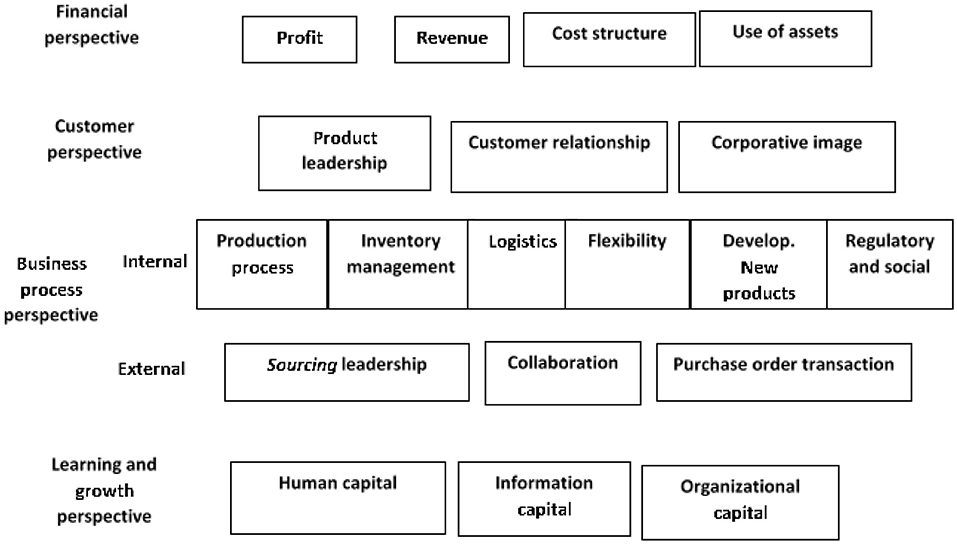
Figure 2. Objectives in BSCS. Source: Park et al. (2005).
Hervani et al. (2005)'s Proposal
The proposal of Hervani et al. (2005) aims to present and provide an overview of the various issues related to measuring the performance of environmental (green) management in the supply chain.
According to Hervani et al. (2005), there are internal and external issues that exert pressure on the implementation of a performance measurement system aimed at green or sustainable supply chains.
According to Hervani et al. (2005), internal issues are linked:
Pressures for internal controls for green or sustainable GCS performance measurement systems are largely cost- and profit-oriented. Waste streams, disposal costs, and overall waste and excesses from lack of recycling. Internal controls are numerous, and include all forms of legal systems, data management systems, links to other performance systems including those based on total quality management, and other industry-specific standards.
According to Hervani et al. (2005) the external issues are:
They can be grouped in different ways, but they are essentially those of external and competing stakeholders. The pressures can be regulatory or market-related (including influences from countless stakeholders, such as communities, employees, customers, suppliers, and competitors, to name a few).
The following is a list of selected environmental performance metrics from the toxic release inventory and the GRI (a multi-stakeholder process by an independent institution whose mission is to develop and disseminate globally applicable sustainability reporting guidelines) ranging from atmospheric emissions to energy recovery and recycling (Hervani et al., 2005):
• Non-punctual air emissions;
• Point of atmospheric emissions;
• Discharges to receiving streams and bodies of water;
• Underground injection at the site;
• Discharges to land on site;
• Discharges to public property treatment works;
• Other off-site transfers;
• Energy recovery on-site and off-site;
• On-site and off-site recycling;
• On-site or off-site treatment;
• Non-productive discharges;
• Reduction activities at source;
• Prevention of spills and leaks;
• Inventory control;
• Modification of raw material;
• Process modifications;
• Cleaning and descending;
• Surface preparation and finishing;
• Product modifications;
• Pollution prevention opportunity audits; and
• Material balance audits (selected metrics of environmental performance used by the toxic release inventory and GRI).
Additional general measures are detailed in the list below (Hervani et al., 2005):
• Employees and participatory management;
• Mission/s and declaration/s of values available to the public;
• Management systems related to social and environmental performance;
• Magnitude and nature of penalties for non-compliance;
• Number, volume, and nature of accidental or non-routine releases on land, air and water;
• Costs associated with environmental compliance;
• Environmental liabilities in accordance with applicable laws and regulations;
• Site remediation costs according to applicable laws and regulations;
• Main prizes received;
• Total energy use;
• Total electricity use;
• Total energy use;
• Other energy uses;
• Total use of non-combustible materials;
• Total water use;
• Habitat improvements and damage due to business operations;
• Quantity of non-product production returned to the process or to the market by recycling or reuse;
• Major environmental, social, and economic impacts associated with the life cycle of products and services;
• Formal written commitments, requiring an assessment of life cycle impacts;
• Programs or procedures to prevent or minimize potentially adverse impacts of products and services; and
• Procedures to assist product and service designers in creating products or services with reduced adverse life cycle impact.
According to Hervani et al. (2005), the project of the performance management system ISO 14031: 2013 involves collecting information and measuring the effectiveness with which an organization manages its environmental aspects in a continuous basis. ISO 14031: 2013 was designed for use in assessing environmental performance with indicators in three key areas:
(1) indicators of environmental conditions;
(2) operational performance indicators; and
(3) management performance indicators.
Regarding the tools that could measure performance in a supply chain, Hervani et al. (2005) mention the BSC in which organizational performance is viewed from four perspectives (the development of metrics, data collection, and analysis of the organization will take place from the perspectives described below):
(1) Learning and growth perspective;
(2) Perspective of the business process;
(3) Customer's perspective; and
(4) Financial perspective.
The Figure 3 presents the four perspectives with the BSC approach focused on sustainable aspects.
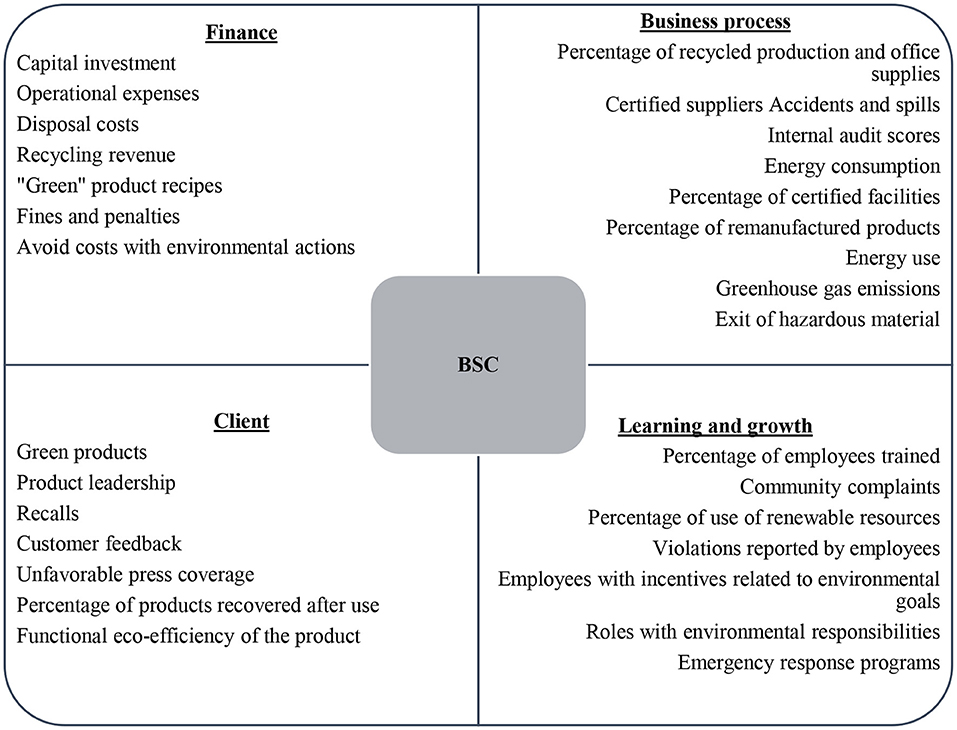
Figure 3. Environmental performance measures by BSC categories. Source: Hervani et al. (2005).
Bhagwat and Sharma's Proposal
The proposal of Bhagwat and Sharma (2007) p develops a BSC for GCS and illustrates the ways in which the BSC was developed and applied in small and medium-sized companies.
The BSC is applied in relation to some metrics to assess GCS performance comprehensively. Four BSC perspectives are applied to these metrics, or the different metrics are adjusted in four different BSC perspectives. Each of the four perspectives must be represented in corresponding metrics and measures that reflect strategic milestones and objectives. Perspectives should be reviewed periodically and updated as necessary. The measures included in the BSC in question must be tracked over time, and explicitly integrated into the strategic process of the GCS (Bhagwat and Sharma, 2007). The Tables 4–7 present the metrics for each of BSC perspectives (financial perspective; and customer perspective; learning/innovation perspective; and internal business perspective).
Financial performance measures signal whether the company's strategy, implementation, and execution are contributing effectively to improving results. Financial objectives include achieving profitability, maintaining liquidity and solvency in both short and long term, growth in sales volume, and maximizing shareholder wealth (Bhagwat and Sharma, 2007).
The customer perspective at BSC requires management to translate their overall vision of the company into specific measures that reflect the factors that really matter to customers (Bhagwat and Sharma, 2007).
The innovation/learning perspective refers to the ability to identify the points and factors that must be developed and maximized to facilitate and make the achievement of the strategical objectives more efficient. Innovation and continuous learning process can bring efficiency in the operational domain of the business. In addition, they ensure cost savings and product differentiation to meet customers' varied requirements. As a result, it strengthens financial capacity through increased profitability and a greater degree of profit appropriation and retaining a larger share of profits to finance the next expansion of the company's future projects under consideration (Bhagwat and Sharma, 2007).
The internal business perspective stems from the business process that has the greatest impact on customer satisfaction factors that affect cycle time, quality, employee skills and, of course, productivity. Companies must decide in which processes and competencies they should stand out and specify measures for each one of them (Bhagwat and Sharma, 2007).
Thakkar et al. (2009)'s Proposal
The proposal by Thakkar et al. (2009) develops a system and performance measurement based on BSC and Scor for small and medium-sized companies.
The metrics used to measure performance need to consider the following aspects: they must be able to capture the essence of organizational performance; the measurement system should ensure an appropriate assignment of metrics to the areas where they would be most appropriate; minimum deviations must exist between organizational objectives and measurement targets; the metrics must reflect an appropriate balance between the measured financial and non-financial targets and the measures must reflect a clear link with the strategic, tactical, and operational levels (Thakkar et al., 2009).
The construction of supply chain performance measurement systems should consider the following dimensions (Thakkar et al., 2009):
• Total supply chain cost: the cost of service as a percentage of revenue.
• Service level: includes fill rate (availability rate of number of items ordered by customers and number of items delivered to customers), operational performance (in terms of average order cycle time, consistency of order cycle time, and/or punctual deliveries), and service reliability (deals with the precision of work in incoming order, warehouse picking, document preparation, etc.).
• Asset management: use of capital investments in facilities and equipment, as well as working capital invested in inventory.
• Customer accommodation: capturing the measurement of perfect orders (zero defect logistics), absolute performance (how a company's logistics performance really impacts customers), and customer satisfaction.
• Cash-to-cash cycle time: time required to convert a dollar spent on inventory into a dollar charged from the sales revenue.
• Benchmarking: makes management aware of state-of-the-art business practices.
Based on the concepts presented above and, on the aspects, present in the BSC and Scor models, the proposal by Thakkar et al. (2009), the Figure 4 presents the elements that form the Scor-BSC structure for small and medium-sized companies.
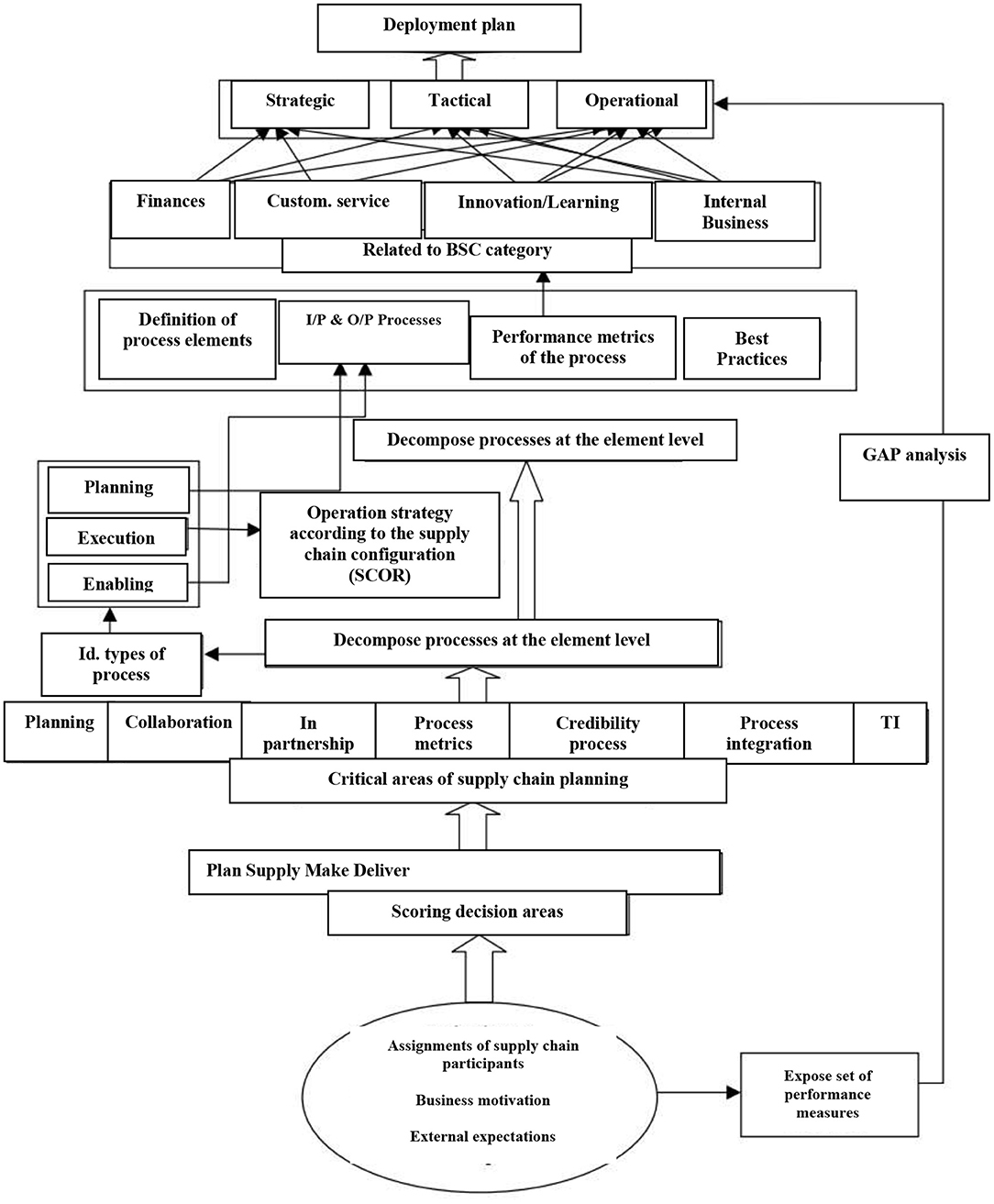
Figure 4. Scor-BSC structure for small and medium-sized companies. Source: Thakkar et al. (2009).
The selected and remarkable characteristics of the proposed Scor-BSC structure for small and medium-sized companies are summarized as follows:
• Inclusion of tangible as well as intangible measures—tangible measures: cost, time, capacity, productivity, and utilization; intangible measures: effectiveness, reliability, availability, and flexibility. These measures need to be transformed into other performance indicators.
• Flexibility and product mix—delivery flexibility can be measured by assessing on-time delivery rate and error rate.
• Each metric describes a critical dimension of activity and process performance. It is impossible for these metrics to cover all dimensions of any activity performance.
• Instead of proposing a fragmented view, an attempt was made to interconnect several issues for the complexity of the business of small and medium-sized companies in managing the flow of goods and information from the point of origin to the final consumers.
• The proposed structure clearly defines the inputs and outputs for each process. The framework includes metrics for various categories of BSC and users are advised to further classify them on a strategic, tactical, and operational level.
Theoretical Proposal for an Integrated Sustainability Performance Measurement System in the Supply Chain
The steps for building a proposal for an integrated performance measurement system aligned with TBL, BSC, and SCOR concepts will be described in the topics below.
Identification of Metrics Present in Performance Measurement Systems
The Table 8 presents the metrics present in the performance measurement systems present in the literature.
Insertion of the Variables in the Dimensions Proposed in the Concept of Sustainability for the TBL
The insertion of variables in the dimensions proposed in TBL was carried out based on the study developed by de Almeida Santos et al. (2020). In that proposal, a maturity model in sustainability was developed and a fourth dimension was added to the concept of TBL, called transversal (refers to the variables of the maturity models in sustainability that present a holistic relationship with the other three dimensions simultaneously and interface with some aspect of corporate strategy).
The Table 9 represents the insertion of the metrics in the dimensions proposed in TBL and added to the transversal dimension.
Presentation of the Integrated Performance Measurement System in Line With TBL and BSC Concepts
In a rapidly changing environment, organizational survival depends not only on operating as profitably, effectively, and efficiently as possible, but also on its commitment to environmental regulations and social demands (Garza-Reyes et al., 2016). For this reason, operational improvement programs have equally important goals of improving sustainability performance and enhancing competitive advantage.
The integrated performance measurement system presented in Figure 5 is a contribution to fulfill the need for tools that help managers and decision makers, considering the social, political, and economical interactions with natural systems. The objective of this work was stated in chapter 1 and consists of a theoretical proposition of a system to evaluate the maturity in sustainability present in the supply chain.
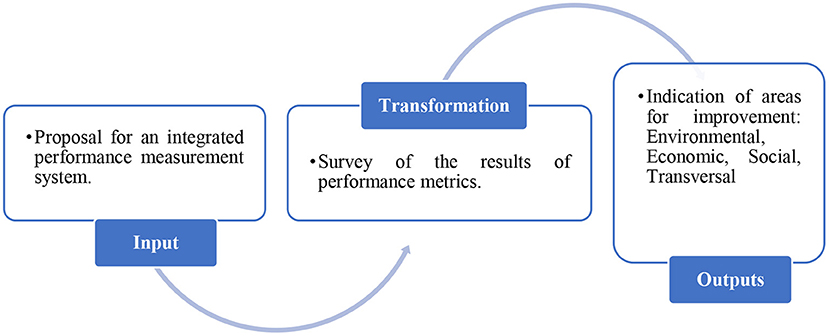
Figure 5. Proposal for an integrated performance measurement system. Source: Adapted de Almeida Santos et al. (2020).
This work will generate the continuity of research, developing tools that help managers and decision makers. Considering that decisions occur in complex environments, where there are social, political and economic interactions with natural systems. From this, practical mathematical models along with technological and analytical solutions can be important tools for decision support in the real world, and the importance of having the right models, tools and methodologies in decision making is increasingly evident.
The integrated performance measurement system has the configuration described in Figure 5.
The choice for a measurement system of maturity and performance in sustainable management in the supply chain, visually presented in Figure 5, can contribute to the organizational performance and evolution of its practices, reaching more satisfactory results.
Several companies have used tools to improve their performance in the social and environmental areas, as well as adhering to corporate programs and social balance sheets. According to Jin and High (2004), among the objectives sought by companies with the adoption of a strategy aimed at sustainability are: obtaining information for internal and external benchmarking of their activities, compliance with laws and regulations, improvement of the company's image, and finally, constant monitoring to improve operational efficiency over time. The benchmarking actions are part of continuous improvement programs, where performance measures of the organization are compared with reference values.
Veleva and Ellenbecker (2001) place sustainability indicators as important support tools for sustainability management. Indicators can facilitate the creation of a more eco-efficient and socially responsible production system. The following is a list of objectives that must be met by companies and their performance measurement system in order to make sustainable production possible:
– Produce periodic information on facility performance;
– Promote organizational learning on sustainability;
– Continuously measure performance to track advances in sustainability;
– Update and improve company performance through external benchmarking;
– Establish communication channels with stakeholders;
– Encourage stakeholder participation in decision makin.
Due to the constant mutability in the economic, political, and organizational scenarios, measuring sustainability maturity is a challenge.
Because organizations interact with several areas in a dynamic environment, being vulnerable to crises at any time.
Measuring a company's sustainable management has an impact on its competitiveness for obtaining new contracts and for business continuity, because it helps the organization plan, execute, and monitor improvement initiatives and process management.
Moreover, assessing the level of sustainable management performance enables the identification of each organization's strengths and weaknesses, and can generate measures to fill existing gaps and improve corporate governance and sustainable management.
It is known that companies need to implement sustainable management in a consistent and systematized way, but there is no decision support tool for performance evaluation focused on Sustainable Management that measures or evaluates the level of performance of this process within organizations according to the requirements of a Management System and, therefore, applicable to companies of different sizes and market segments.
Critical Evaluation of the Theoretical Proposal
After the construction of the theoretical proposition, some aspects were evaluated for the proposition of future studies. According to Anthony (2019), information technology (professionals in the field) exert positive influence on environmental performance.
Another aspect is the positive influence of the artificial neural network (ANN) approach in establishing the relationship between supply chain integration; quality leadership; supply focus; consumer focus; and information sharing and the dependent variable (sustainability performance) (Lim et al., 2021).
The value chain should be another point for evaluation regarding sustainability performance. According to Anthony (2019), primary activities positively influence the adoption of sustainable value chain concepts. Another important aspect is that sustainable value chain adoption is mainly influenced by operational performance. Similarly, green education and environmental awareness of professionals is one of the crucial initial steps to improve sustainable value chain adoption.
Conclusions and Recommendations for Future Studies
The relationship between companies that are part of a supply chain is important to influence the sustainability of products and services. For example, the buyer may choose to incorporate criteria that consider sustainability performance in the selection of suppliers.
In this context, the research question arises: how to build the necessary knowledge about supply chain performance indicators in sustainability, systematizing in an evaluation process integrated with the organizational results?
The general objective is to build an integrated system of sustainability performance analysis for the supply chain. In order to achieve the general objective, the specific objectives are the following: (i) selection of the bibliographic portfolio and (ii) analysis of articles content. All of these items were carried out in Chapter 4: “Theoretical proposal for an integrated performance measurement system for sustainability in the supply chain.”
The contribution to the scientific literature lies on the fact that the performance measurement of the production chain has been studied by some authors. However, these studies are distributed in a dispersed way in the literature, which makes a panoramic view on the subject difficult. In order to provide a systematic view on this subject, this article presented a report on publications within the scope of applying indicators to monitor sustainability performance in the supply chain.
The main applications of this work are to support and guide organizational practices toward an integrated performance measurement system for sustainability in the supply chain.
The contribution to organizational practices is explained in Chapter 4, in which the system for measuring sustainability performance in the supply chain is presented.
The literature review allowed the development of a system to address issues of sustainability performance in the supply chain.
Future studies can be suggested, such as the application of the systematic proposed in this article in case studies in several economic sectors. Similarly, the application of the system to influence supplier selection and development.
Data Availability Statement
The original contributions presented in the study are included in the article/supplementary material, further inquiries can be directed to the corresponding author/s.
Author Contributions
DS: conceptualization, project administration, and visualization. DS, OQ, CG, and JF: formal analysis, investigation, validation, and writing—original draft, review, and editing. DS and OQ: methodology and resources. OQ, CG, and JF: supervision. All authors contributed to the article and approved the submitted version.
Conflict of Interest
The authors declare that the research was conducted in the absence of any commercial or financial relationships that could be construed as a potential conflict of interest.
Publisher's Note
All claims expressed in this article are solely those of the authors and do not necessarily represent those of their affiliated organizations, or those of the publisher, the editors and the reviewers. Any product that may be evaluated in this article, or claim that may be made by its manufacturer, is not guaranteed or endorsed by the publisher.
References
Andersen, P. H. (2019). “Sustainable Operations Management (SOM) strategy and management: an introduction to part I,” in Operations Management and Sustainability (Cham: Palgrave Macmillan), 15–25. doi: 10.1007/978-3-319-93212-5_2
Anthony, B. Jr. (2019). Green information system integration for environmental performance in organizations: an extension of belief–action–outcome framework and natural resource-based view theory. Benchmark. Int. J. 26, 1033–1062. doi: 10.1108/BIJ-05-2018-0142
Bhagwat, R., and Sharma, M. K. (2007). Performance measurement of supply chain management: a balanced scorecard approach. Comput. Indust. Eng. 53, 43–62. doi: 10.1016/j.cie.2007.04.001
Bititci, U. S., Garengo, P., Ates, A., and Nudurupati, S. S. (2015). Value of maturity models in performance measurement. Int. J. Product. Res. 53, 3062–3085. doi: 10.1080/00207543.2014.970709
Bourne, M., Neely, A., Mills, J., and Platts, K. (2003). Implementing performance measurement systems: a literature review. Int. J. Bus. Perform. Manage. 5, 1–24. doi: 10.1504/IJBPM.2003.002097
Carletto, B. (2006). Competências Essenciais Requeridas para o Gerenciamento das Linhas de Produção da Indústria Alimentícia: A Visão dos Seus Gestores. Master's thesis, Universidade Tecnológica Federal do Paraná.
de Almeida Santos, D., Luiz Gonçalves Quelhas, O., Francisco Simões Gomes, C., Perez Zotes, L., Luiz Braga França, S., Vinagre Pinto de Souza, G., et al. (2020). Proposal for a maturity model in sustainability in the supply chain. Sustainability 12, 9655. doi: 10.3390/su12229655
Franco-Santos, M., Lucianetti, L., and Bourne, M. (2012). Contemporary performance measurement systems: a review of their consequences and a framework for research. Manage. Account. Res. 23, 79–119. doi: 10.1016/j.mar.2012.04.001
Gardner, T. A., Benzie, M., Börner, J., Dawkins, E., Fick, S., Garrett, R., et al. (2019). Transparency and sustainability in global commodity supply chains. World Dev. 121, 163–177. doi: 10.1016/j.worlddev.2018.05.025
Garza-Reyes, J. A., Villarreal, B., Kumar, V., and Molina Ruiz, P. (2016). Lean and green in the transport and logistics sector–a case study of simultaneous deployment. Product. Plann. Control 27, 1221–1232. doi: 10.1080/09537287.2016.1197436
Golinska, P., and Kuebler, F. (2014). The method for assessment of the sustainability maturity in remanufacturing companies. Proc. Cirp. 15, 201–206. doi: 10.1016/j.procir.2014.06.018
Gunasekaran, A., Patel, C., and Tirtiroglu, E. (2001). Performance measures and metrics in a supply chain environment. Int. J. Operat. Product. Manage. 21, 71–87. doi: 10.1108/01443570110358468
Hald, K. S., and Mouritsen, J. (2018). The evolution of performance measurement systems in a supply chain: a longitudinal case study on the role of interorganisational factors. Int. J. Product. Econ. 205, 256–271. doi: 10.1016/j.ijpe.2018.09.021
Hammer, J., and Pivo, G. (2017). The triple bottom line and sustainable economic development theory and practice. Econ. Dev. Quar. 31, 25–36. doi: 10.1177/0891242416674808
Hervani, A. A., Helms, M. M., and Sarkis, J. (2005). Performance measurement for green supply chain management. Benchmark. Int. J. 12, 330–353. doi: 10.1108/14635770510609015
Hofmann, H., Schleper, M. C., and Blome, C. (2018). Conflict minerals and supply chain due diligence: an exploratory study of multi-tier supply chains. J. Bus. Ethics 147, 115–141. doi: 10.1007/s10551-015-2963-z
Ibn-Mohammed, T., Mustapha, K. B., Godsell, J. M., Adamu, Z., Babatunde, K. A., Akintade, D. D., et al. (2020). A critical review of the impacts of COVID-19 on the global economy and ecosystems and opportunities for circular economy strategies. Resourc. Conserv. Recycl. 164, 105169. doi: 10.1016/j.resconrec.2020.105169
Jin, X., and High, K. A. (2004). Application of hierarchical life cycle impact assessment in the identification of environmental sustainability metrics. Environ. Prog. 23, 291–301. doi: 10.1002/ep.10048
Laihonen, H., and Pekkola, S. (2016). Impacts of using a performance measurement system in supply chain management: a case study. Int. J. Product. Res. 54, 5607–5617. doi: 10.1080/00207543.2016.1181810
Lambert, D. M., and Enz, M. G. (2017). Issues in supply chain management: progress and potential. Indust. Market. Manage. 62, 1–16. doi: 10.1016/j.indmarman.2016.12.002
Lim, A. F., Lee, V. H., Foo, P. Y., Ooi, K. B., and Tan, G. W. H. (2021). Unfolding the impact of supply chain quality management practices on sustainability performance: an artificial neural network approach. Supply Chain Manage. Int. J. doi: 10.1108/SCM-03-2021-0129
Lopes, L. J., and Pires, S. R. I. (2020). Green supply chain management in the automotive industry: a study in Brazil. Bus. Strat. Environ. 29, 2755–2769. doi: 10.1002/bse.2541
Magacho, C. S. (2017). Proposal for an Environmental Sustainability Assessment Model in the Supply Chain: A Case Study. Dissertation, Master's Degree in Production Engineering and Systems, Federal Technological University of Paraná. Pato Branco.
Neely, A. (1999). The performance measurement revolution: why now and what next? Int. J. Operat. Product. Manage. 19, 205–228. doi: 10.1108/01443579910247437
Neri, A., Cagno, E., Lepri, M., and Trianni, A. (2021). A triple bottom line balanced set of key performance indicators to measure the sustainability performance of industrial supply chains. Sustain. Product. Consump. 26, 648–691. doi: 10.1016/j.spc.2020.12.018
Okongwu, U., Morimoto, R., and Lauras, M. (2013). The maturity of supply chain sustainability disclosure from a continuous improvement perspective. Int. J. Product. Perform. Manage. 2, 827–855. doi: 10.1108/IJPPM-02-2013-0032
Park, J. H., Lee, J. K., and Yoo, J. S. (2005). A framework for designing the balanced supply chain scorecard. Eur. J. Inform. Syst. 14, 335–346. doi: 10.1057/palgrave.ejis.3000544
Pojasek, R. B. (2012). Understanding sustainability: an organizational perspective. Environ. Qual. Manage. 21, 93–100. doi: 10.1002/tqem.20330
Raut, R. D., Mangla, S. K., Narwane, V. S., Gardas, B. B., Priyadarshinee, P., and Narkhede, B. E. (2019). Linking big data analytics and operational sustainability practices for sustainable business management. J. Clean. Prod. 224, 10–24. doi: 10.1016/j.jclepro.2019.03.181
Sarkis, J. (2020). Supply chain sustainability: learning from the COVID-19 pandemic. Int. J. Operat. Product. Manage. 41, 63–73. doi: 10.1108/IJOPM-08-2020-0568
Shaharudin, M. S., Fernando, Y., Jabbour, C. J. C., Sroufe, R., and Jasmi, M. F. A. (2019). Past, present, and future low carbon supply chain management: a content review using social network analysis. J. Clean. Prod. 218, 629–643. doi: 10.1016/j.jclepro.2019.02.016
Srivastava, S. K. (2007). Green supply-chain management: a state-of-the-art literature review. Int. J. Manag. Rev. 9, 53–80. doi: 10.1111/j.1468-2370.2007.00202.x
Standing, C., and Jackson, P. (2007). An approach to sustainability for information systems. J. Syst. Inform. Technol. 9, 167–176. doi: 10.1108/13287260710839247
Thakkar, J., Kanda, A., and Deshmukh, S. G. (2009). Supply chain performance measurement framework for small and medium scale enterprises. Benchmark. Int. J. 16, 702–723. doi: 10.1108/14635770910987878
Touboulic, A., and Walker, H. (2015). Theories in sustainable supply chain management: a structured literature review. Int. J. Phys. Distrib. Logist. Manage. 45, 16–42. doi: 10.1108/IJPDLM-05-2013-0106
Veleva, V., and Ellenbecker, M. (2001). Indicators of sustainable production: framework and methodology. J. Clean. Prod. 9, 519–549. doi: 10.1016/S0959-6526(01)00010-5
Keywords: sustainability, supply chain, performance measurement system, logistic, production chain
Citation: Santos DdA, Quelhas OLG, Gomes CFS and Filho JRdF (2021) Theoretical Proposal for an Integrated Sustainability Performance Measurement System in the Supply Chain. Front. Sustain. 2:720763. doi: 10.3389/frsus.2021.720763
Received: 04 June 2021; Accepted: 30 August 2021;
Published: 27 October 2021.
Edited by:
Golam Kabir, University of Regina, CanadaReviewed by:
Niamat Ullah Ibne Hossain, Mississippi State University, United StatesAnthony Bokolo Jnr, Norwegian University of Science and Technology, Norway
Copyright © 2021 Santos, Quelhas, Gomes and Filho. This is an open-access article distributed under the terms of the Creative Commons Attribution License (CC BY). The use, distribution or reproduction in other forums is permitted, provided the original author(s) and the copyright owner(s) are credited and that the original publication in this journal is cited, in accordance with accepted academic practice. No use, distribution or reproduction is permitted which does not comply with these terms.
*Correspondence: Davidson de Almeida Santos, dasantos@id.uff.br
 Davidson de Almeida Santos
Davidson de Almeida Santos Osvaldo Luiz Gonçalves Quelhas
Osvaldo Luiz Gonçalves Quelhas Carlos Francisco Simões Gomes
Carlos Francisco Simões Gomes José Rodrigues de Farias Filho
José Rodrigues de Farias Filho